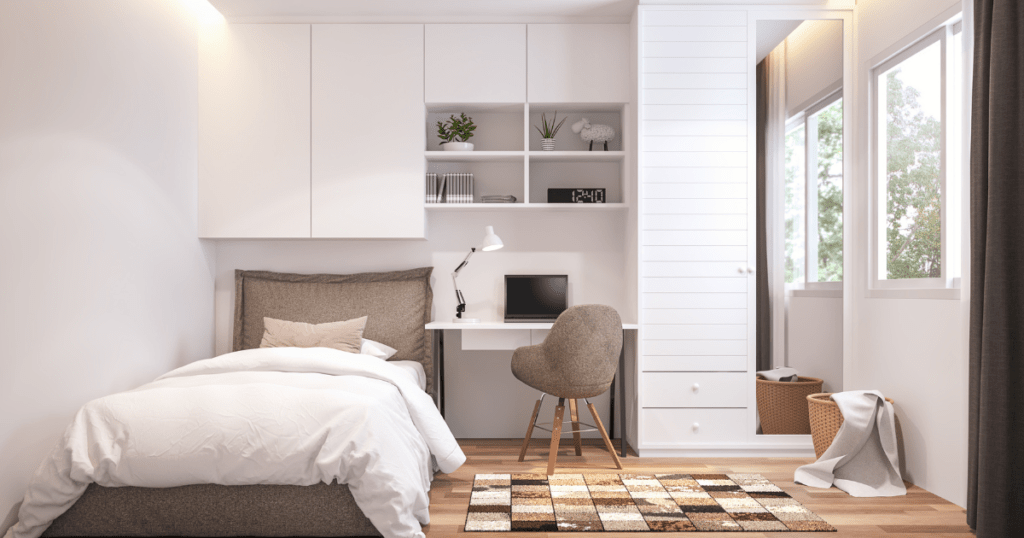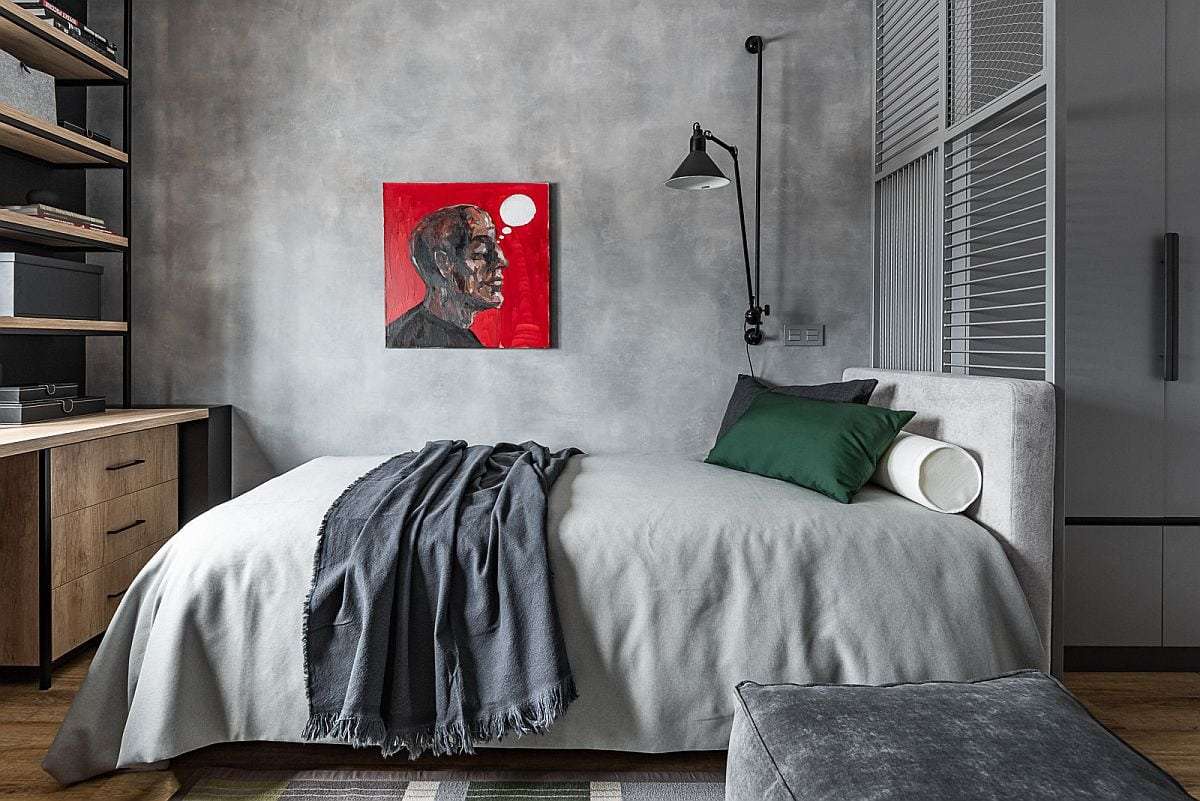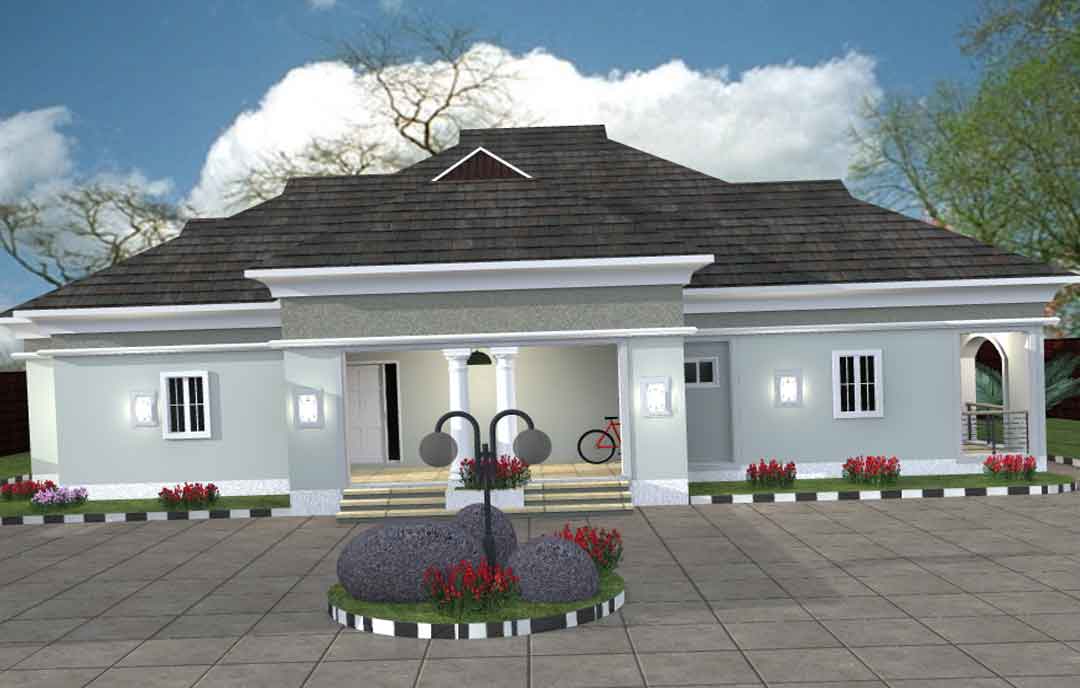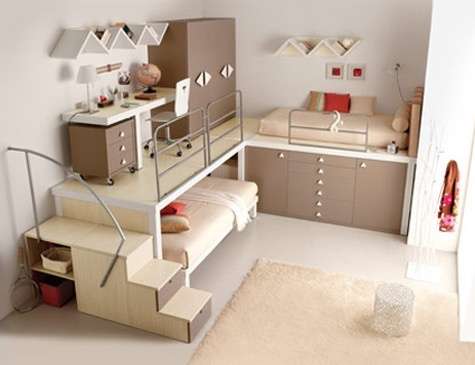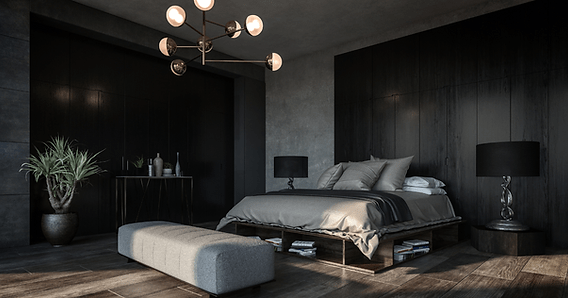The challenge of maximizing space in a small bedroom often leads to innovative design solutions, and few are as effective as strategically planned built-in wardrobes. A well-designed **small space built in wardrobe designs for small bedroom** can transform a cluttered, cramped room into an organized and serene sanctuary. Thinking vertically and incorporating multi-functional elements are key to unlocking the full potential of these storage solutions. Discovering the right approach for your particular needs requires careful consideration of layout, style, and the specific items you need to store. Clever **small space built in wardrobe designs for small bedroom** can also become a design feature, adding value and style to your room.
Maximizing Vertical Space
One of the most effective strategies for small bedrooms is to build upwards. Take advantage of the entire wall height to create ample storage without sacrificing floor space. Consider these options:
- Floor-to-ceiling wardrobes: These provide maximum storage capacity and create a clean, streamlined look.
- Overhead storage: Utilize the space above the hanging rods with shelves or cabinets for less frequently used items.
- Built-in shelves above the bed: Extend the wardrobe design to incorporate shelving above the bed for books, decor, or even a bedside lamp.
Clever Internal Organization
The interior layout of your built-in wardrobe is just as important as its exterior design. Optimize every inch with these organizational tips:
- Adjustable shelves: Customize the shelf heights to accommodate different items.
- Pull-out drawers and baskets: These make it easy to access items at the back of the wardrobe.
- Hanging rods at different heights: Separate short and long garments to maximize hanging space.
- Shoe racks or shelves: Keep shoes organized and off the floor.
Design Considerations for Small Rooms
When designing a built-in wardrobe for a small bedroom, consider these aesthetic and functional factors:
Color and Material Choices
Light colors and reflective surfaces can help make a small room feel larger and brighter. Consider using:
- White or light-colored paint: Reflects light and creates a sense of spaciousness.
- Mirrored doors: Create the illusion of more space and provide a full-length mirror.
- Glass shelves: Allow light to pass through and make the wardrobe feel less bulky.
Door Styles
The type of door you choose can significantly impact the functionality of your built-in wardrobe in a small space. Consider these options:
- Sliding doors: Save space by eliminating the need for swing-out doors.
- Bi-fold doors: Fold in on themselves, requiring less clearance than traditional doors.
- Pocket doors: Slide into the wall, offering the most space-saving option.
Example Comparison Table
| Feature | Sliding Doors | Bi-Fold Doors | Pocket Doors |
|---|---|---|---|
| Space Saving | Excellent | Good | Best |
| Accessibility | Good (access to half of wardrobe at a time) | Good (access to half of wardrobe at a time) | Excellent (full access) |
| Cost | Moderate | Moderate | Higher |
| Installation Complexity | Moderate | Moderate | Higher |
Ultimately, choosing the right **small space built in wardrobe designs for small bedroom** requires careful planning and consideration of your individual needs and the specific characteristics of your space. By focusing on maximizing vertical space, implementing clever internal organization, and making smart design choices, you can create a functional and stylish storage solution that transforms your small bedroom into a haven of tranquility.
Integrating lighting solutions directly into the built-in wardrobe design is another crucial aspect often overlooked. Strategically placed LED strip lights within the wardrobe’s interior illuminate the contents, facilitating effortless retrieval of items and enhancing the overall aesthetic. Furthermore, consider incorporating automatic lighting that activates upon opening the wardrobe doors, further optimizing convenience and energy efficiency.
MATERIALS AND FINISHES: A MATTER OF DURABILITY AND AESTHETICS
The selection of appropriate materials and finishes is paramount to ensuring the longevity and visual appeal of the built-in wardrobe. Opting for high-quality, durable materials such as engineered wood or solid wood is advisable, as these offer superior resistance to wear and tear. The finish should complement the existing décor of the bedroom while providing a protective layer against moisture and scratches. Explore options such as:
– Laminate finishes: Cost-effective and available in a wide array of colors and textures.
– Veneer finishes: Offer the aesthetic appeal of solid wood at a more accessible price point.
– Painted finishes: Allow for customization and can be easily updated to reflect changing trends.
CUSTOMIZATION AND PROFESSIONAL INSTALLATION
While DIY approaches to wardrobe construction are feasible, engaging a professional installer is strongly recommended, particularly for complex designs or irregular room shapes. A qualified installer possesses the expertise to ensure precise measurements, accurate assembly, and seamless integration of the wardrobe into the existing architectural framework. Furthermore, professional installers can offer valuable insights regarding space optimization and design refinements, ensuring that the final product meets the specific needs and expectations of the client.
BEYOND CLOTHING: MULTIFUNCTIONAL STORAGE SOLUTIONS
A well-designed built-in wardrobe can extend its functionality beyond mere clothing storage. Consider incorporating features such as:
– Integrated dressing table: A pull-out dressing table with a mirror and lighting can transform the wardrobe into a miniature dressing area.
– Hidden ironing board: A fold-away ironing board can be discreetly concealed within the wardrobe, saving valuable floor space.
– Jewelry organizers: Dedicated compartments for jewelry and accessories can prevent tangling and damage.
– Safe or lockable compartment: For storing valuable items, consider integrating a secure safe or lockable compartment within the wardrobe.
In conclusion, the successful implementation of small space built-in wardrobe designs in a compact bedroom environment necessitates a holistic approach, encompassing meticulous planning, strategic material selection, and professional execution. By prioritizing functionality, aesthetic coherence, and long-term durability, one can transform a limited space into a highly organized and visually appealing sanctuary, effectively maximizing the available area and enhancing the overall quality of life;
